
The Toys and Children’s Products Safety Ordinance (Amendment of Schedules 1 and 2) Notice 2024 was officially released by the the Hong Kong government of China in the Gazette on 16 February 2024. The Notice seeks to update the safety standards for toys and six classes of children’s products listed in Schedule 2 (Schedule 2 products) under the Toys and Children’s Products Safety Ordinance (Cap. 424).
The six classes of Schedule 2 products are (i) baby walking frames; (ii) bunk beds for domestic use; (iii) child safety barriers for domestic use; (iv) children’s paints; (v) playpens for domestic use; and (vi) wheeled child conveyances. The Notice will take effect on 1 August 2024.
The Ordinance stipulates that a person must not manufacture, import or supply a toy or a Schedule 2 product unless it complies with all the applicable requirements contained in any one of the safety standards (international standards or standards adopted by major economies) specified in Schedule 1 (applicable to toys) or Schedule 2 (applicable to Schedule 2 products). The Government keeps in view any updates or amendments to the safety standards so as to apply up-to-date and operative versions of the standards to toys and Schedule 2 products supplied in Hong Kong. The last updates to Schedules 1 and 2 came into operation in September 2022 and August 2023 respectively.
The main changes are as follows:
| Products | Current International Standards and European Standards | New International Standards and European Standards |
| Toys | ISO 8124-1:2018 (incorporating Amendment 1:2020 and Amendment 2:2020) | ISO 8124-1:2022 |
| ISO 8124-2:2014 | ISO 8124-2:2023 | |
| ISO 8124-3:2020 | ISO 8124-3:2020 (incorporating Amendment 1:2023) | |
| BS EN 71-13:2021 | BS EN 71-13:2021 + A1:2022 | |
| Baby Walking Frames | ASTM F977-18 | ASTM F977-22e1 |
| Bunk Beds for Domestic Use | ISO 9098-1:1994 | ISO 9098-1:2023 |
| ISO 9098-2:1994 | ISO 9098-2:2023 | |
| Child Safety Barriers for Domestic Use | ASTM F1004-21 | ASTM F1004-23 |
| Children’s Paints | ISO 8124-3:2020 | ISO 8124-3:2020 (incorporating Amendment 1:2023) |
| Playpens for Domestic Use | ASTM F406-19 | ASTM F406-22 |
| Wheeled Child Conveyances | BS EN 1888-1:2018 | BS EN 1888-1:2018 + A1:2022 |
| AS/NZS 2088:2013 | AS 2088:2022 |
More details can be found at: https://www.legco.gov.hk/yr2024/english/brief/cedbcr08183_20240215-e.pdf
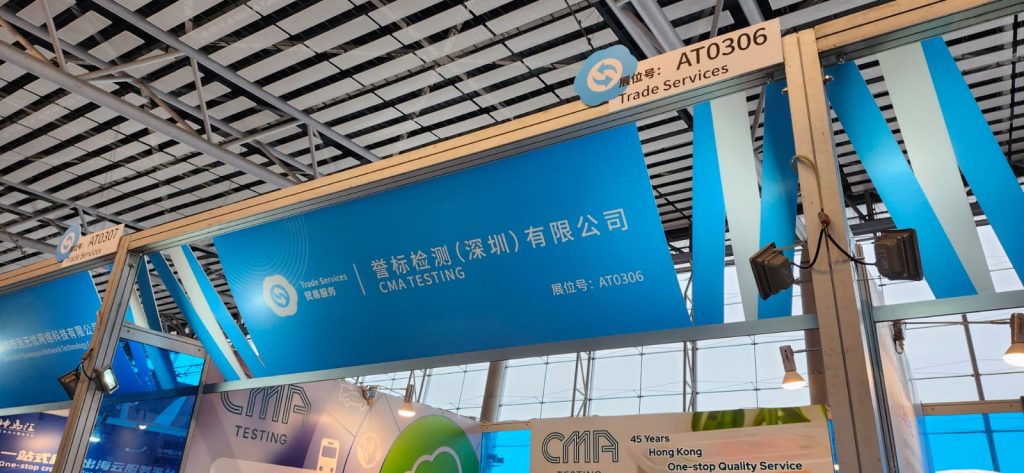
The Phase II of the 135th Canton Fair commenced on 23 April 2024 and will exhibit until 27 April 2024. CMA Testing is thrilled to take part in this international event and to seize the opportunity to present our CMA+, a technology commercialization center that supports upgrade and transform industrial and commercial enterprises from new product development to technology commercialization. Welcome to visit our booth at AT0306, Area A, to learn more about our innovation and technology-related services, as well as testing, inspection, and factory audit services.

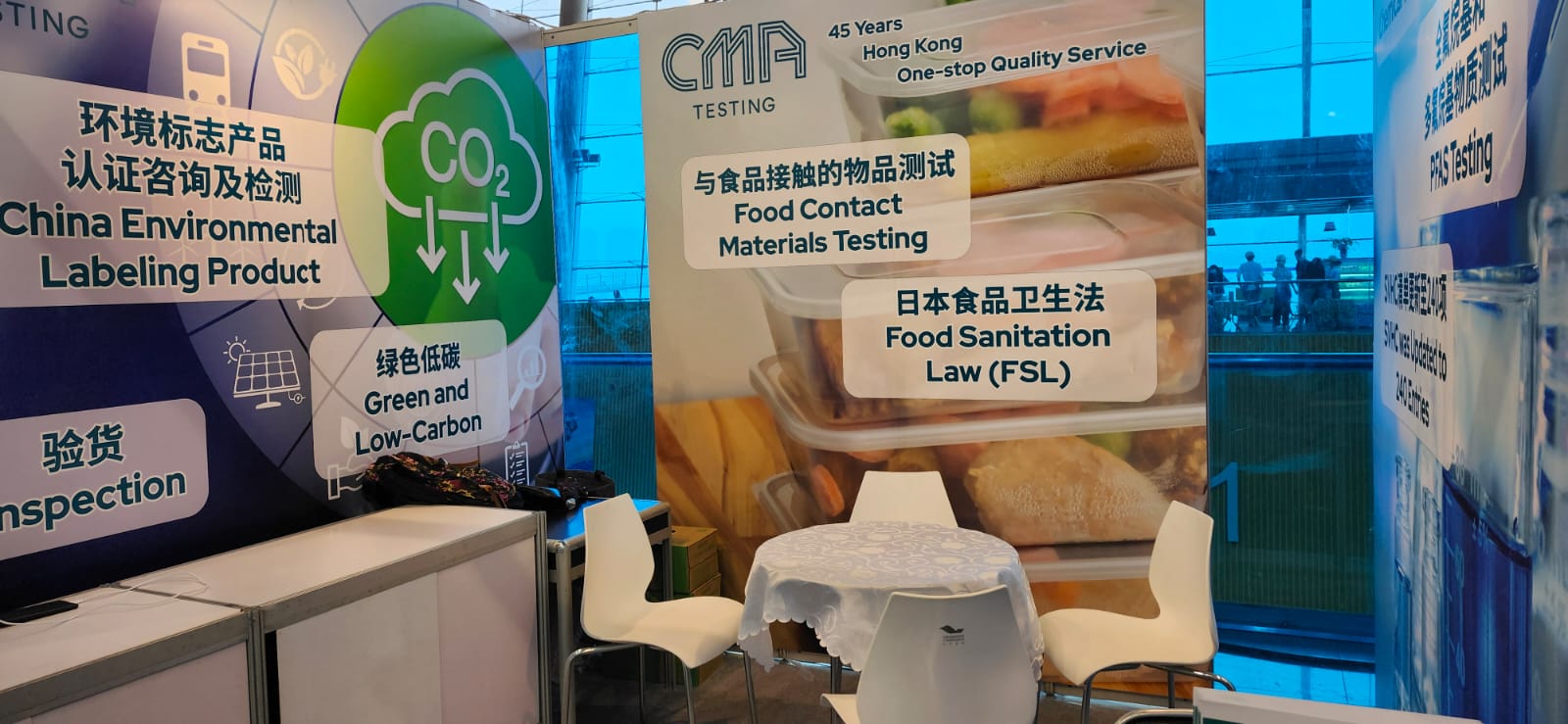
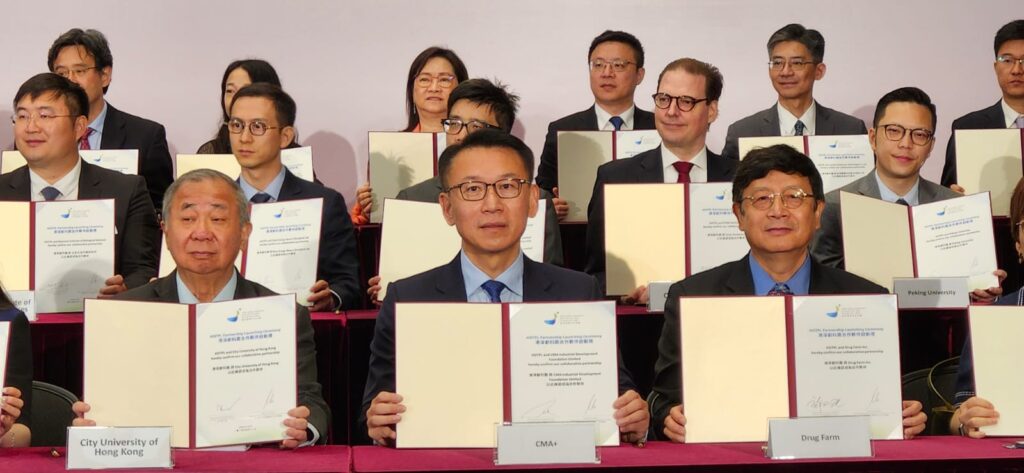
On 18 April, the HSITP held the Partnership Launching Ceremony at the Hong Kong Government Headquarters. The ceremony was officiated by Mr. John LEE Ka-chiu, Chief Executive of the HKSAR. The Vice President of the Chinese Manufacturers’ Association of Hong Kong and Chairman of CMA Testing, Mr. Robert LOK Pak-keung, signed the MoU on behalf of CMA Testing for planning to advance the development of our technology commercialization platform “CMA+” and the pilot manufacturing center “PMC” in the Park.

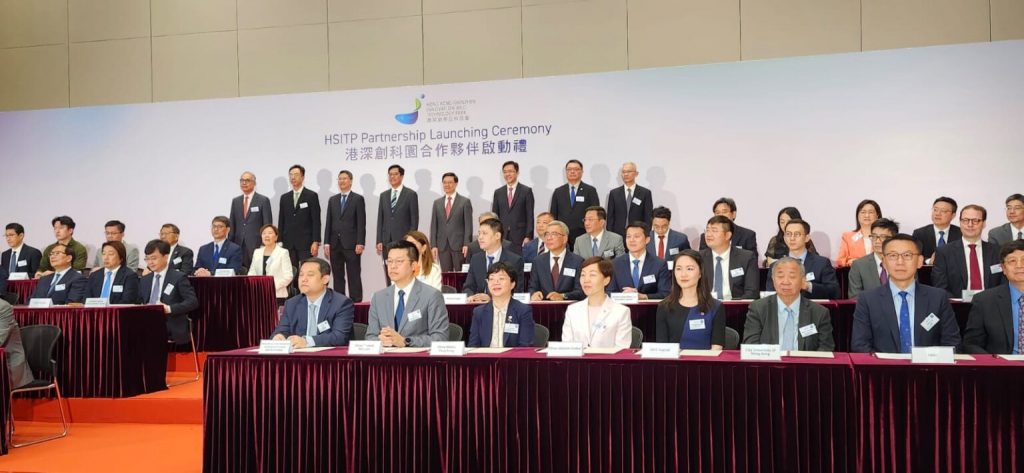

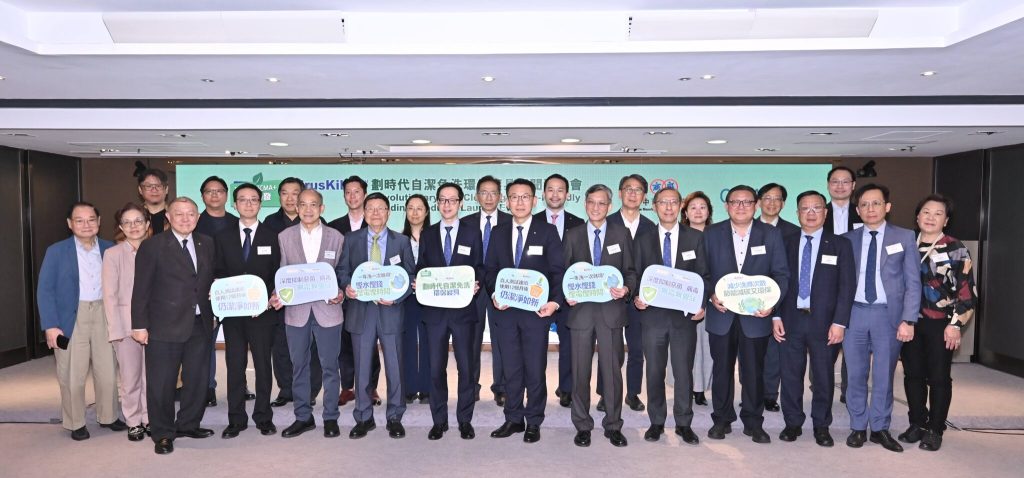
Congratulations to A-Fontane, our CMA+ partner, has accomplished a remarkable milestone with the product launching of their “VirusKiller™ revolutionary self-cleaning no-wash eco-friendly bedding products” on 10 April 2024. At CMA+, we take immense pride in providing our partners unwavering support and invaluable expertise throughout their technology commercialization journey. We believe that the success cases of our clients will motivate other traditional manufacturers to leverage our platforms, enabling them not only improve their technology product development but also empower them to efficiently meet the demands of the market.
CMA Testing has successively established the technology commercialization platform “CMA+” and the pilot manufacturing center “PMC” to assist Hong Kong enterprises in applying innovative technologies to develop new products and provide a series of pilot manufacturing supports as well as testing and certification services.
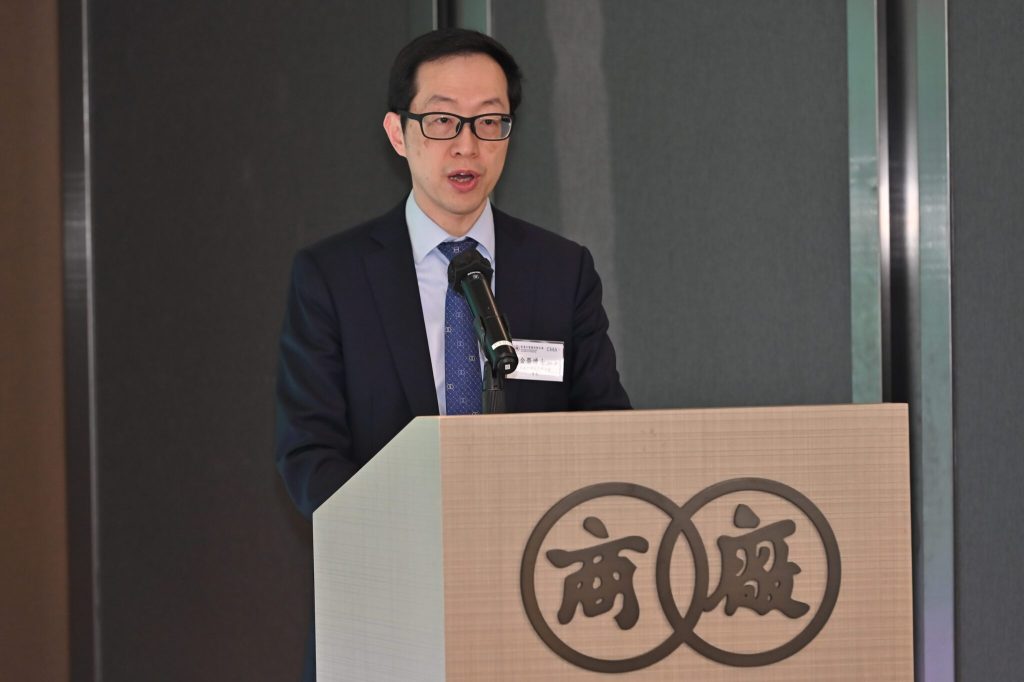
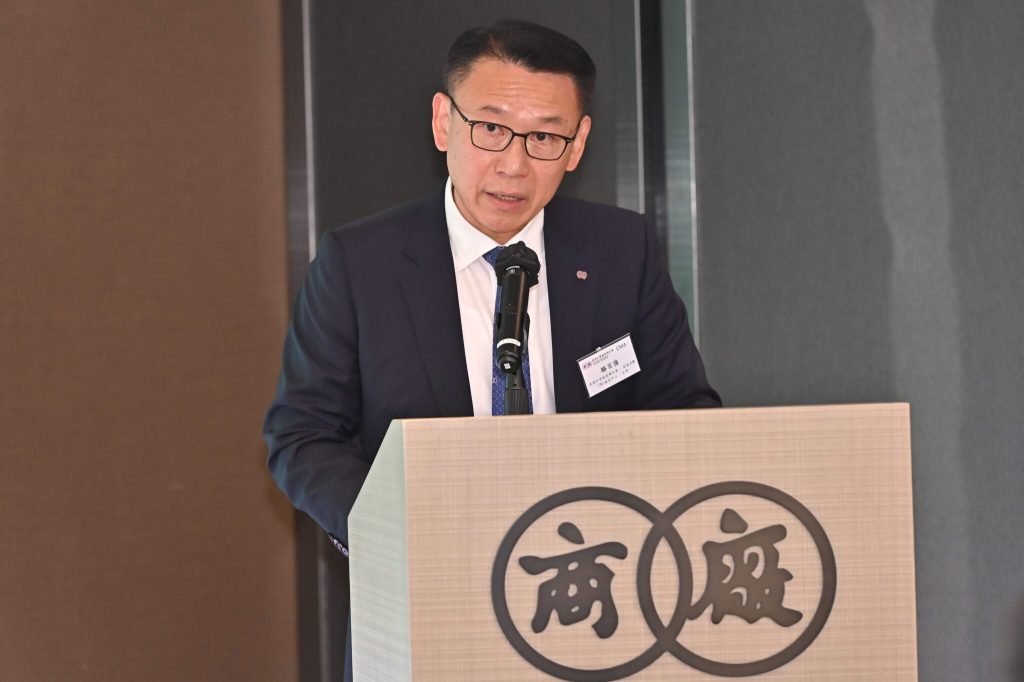
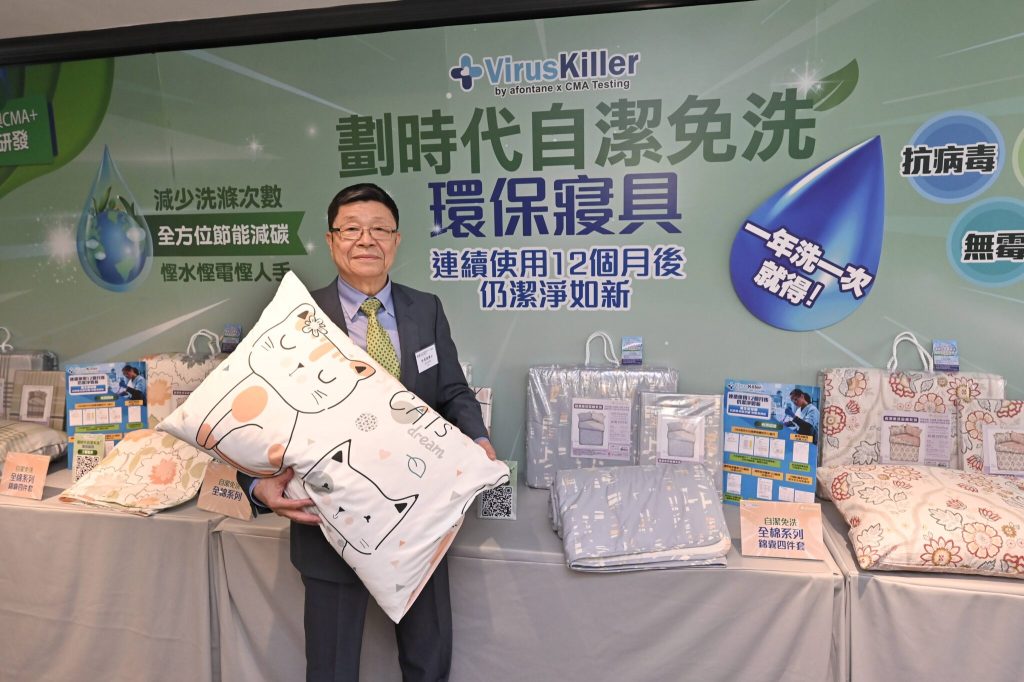

The 135th China Import and Export Fair will be held in Guangzhou from April 15 to May 5, 2024. CMA Testing will participate in the second phase of the exhibition, and welcome to visit the booth for guidance and on-site communication.
Date:
April 23-27, 2024
Place:
No.380 Yuejiang Zhong Road, Haizhu District Guangzhou
Booth:
AT0306
In front of the entrance of Hall 3.2

The regulation excluded natural polymers, degraded polymers, soluble polymers, inorganic polymers, microplastics which releases to environment are prevented during intended use, and permanently incorporated into a solid matrix during intended use.
What is Microplastic?
Microplastic was first coined by Richard Thompson in 2004. The European Union defined in REACH Annex XVII entry 78 that plastic of all dimensions under 5mm or length to diameter ration greater than 3 which is under 15mm are Microplastics.
Microplastics usually comes from microbeads in facial scrubs, abrasive particles in sandblasting, synthetic fibers, plastic pellets, plastic particles drugs vectors, and breakdown under weathering, sunlight exposure, and mechanical action.
The hazards of microplastics includes the chemical substances it carries, environmental pollutants adsoebed, biofilms growing on the surface of the microplastics, and finally eventually cause health concerns and ecological disruptions.
Other Regulations related to Microplastics
- United States Microbead-Free Waters Act
- Canada Microbeads in Toiletries Regulations (SOR/2017-111)
- Hong Kong Voluntary Scheme for Phasing Out Microbeads in Personal Care and Cosmetic Products (PCCPs)
CMA Testing Services related Microplastic
CMA Testing has offering ranges of services analyzing microplastic in products, such as Laboratory Methods for Microplastics in the Marine Envrionemnt: Recommendations for quantifying synthetic particles in waters and sediments issued by the National Oceanic and Atmospheric Administration (NOAA) Marine Debris Program. The services CMA Testing provided to help the companies to understand the products specifications and the microplastics contents, ensure the products complies with the current regulations and meet the necessary requirements around the world.

The opening ceremony of CMA+ Shanghai, the technology commercialization platform of CMA Testing, successfully held at the East Lake Hotel in Shanghai on 21 March 2024. It brought together our distinguished guests, including Council and Association members to celebrate this special moment. Officiating at the ceremony were Director of the Hong Kong and Macao Section of the Shanghai Hong Kong and Macao Affairs Office, Mr. Chen Zhi-hui; Investment Promotion Section of Shanghai Xuhui District Investment Promotion Office, Mr. Shi Hai-xiang; Shanghai Representative of the Hong Kong Trade Development Council, Ms. Eve Wang Ying-bei; Vice President of the Chinese Manufacturers’ Association of Hong Kong cum Chairman of CMA Testing, Mr. Robert Lok Pak-keung; Deputy General Manager of Shanghai Hengfu Economic Development Co., Ltd., Mr. Shi Lei; President of the Hong Kong Chamber of Commerce in Shanghai, Mr. Edward Cheung Kwok-ching; Secretary-General of Shanghai Indoor Environment Purification Industry Association, Representative of Shanghai Municipal People’s Congress, Deputy Chairman of Yangpu District Committee of the Chinese Peasants and Workers’ Party, and New President of Yangpu District, Shanghai, Ms. Wang Fang; the General Committee Member of the Chinese Manufacturers’ Association of Hong Kong, and a Board Member of CMA Testing, Mr. Spande Chang Chi-yin; and the Chief Operations Officer of the CMA Testing, Mr. Dominic Lam Chun-hong.
CMA+ also held cooperation memorandum signing ceremonies with the Shanghai Hengfu Economic Development Co., Ltd., the Hong Kong Chamber of Commerce in Shanghai, and Shanghai Indoor Environment Purification Industry Association at the same venue.
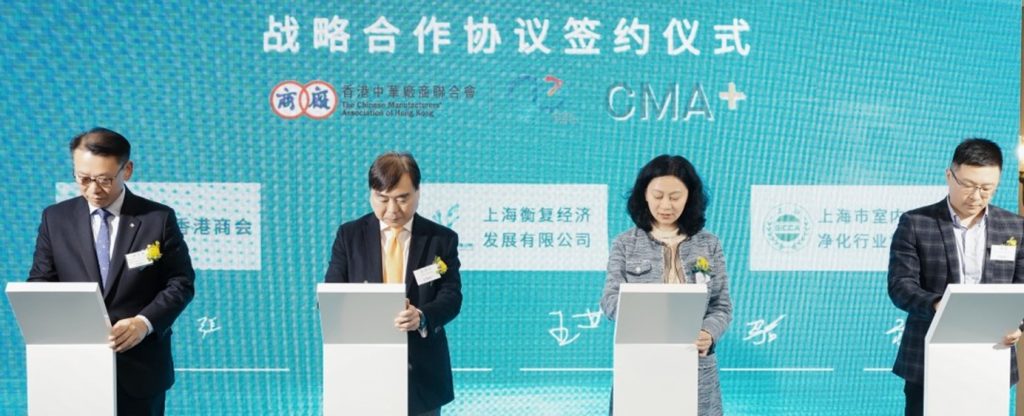
The theme forum covered a broad spectrum of topics, including corporate innovation and development, sustainable development, ESG concepts, innovative materials, and new technologies. It garnered the active involvement of numerous industry elites and experts, fostering meaningful exchanges and discussions.
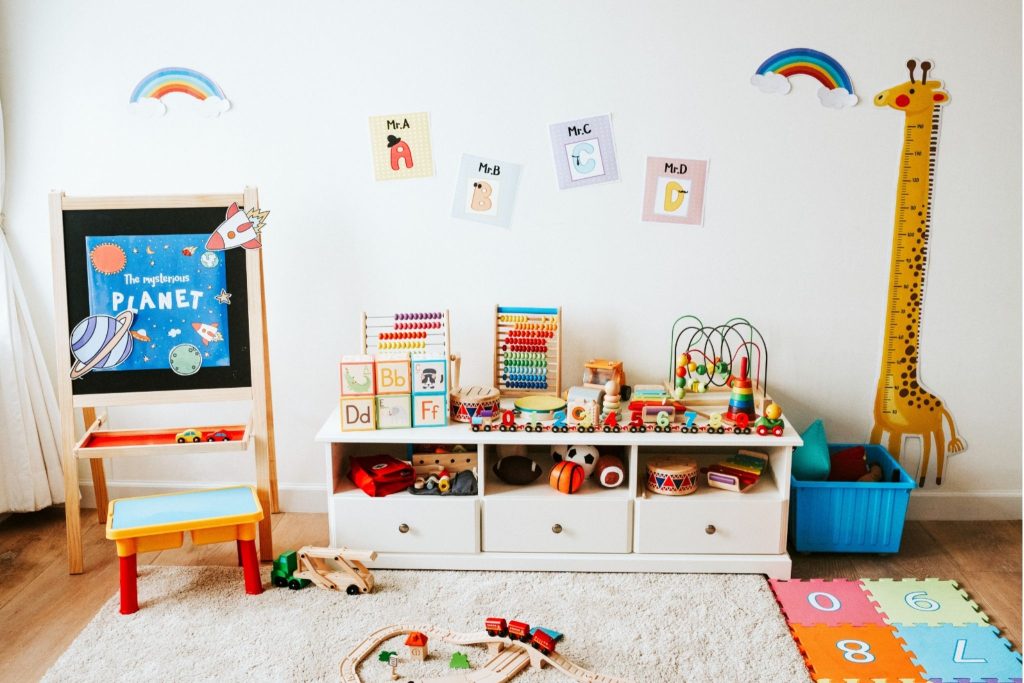
On 13 October 2023, ASTM International has published a revised ASTM F963 Standard Consumer Safety Specification for Toy Safety ASTMF963-23 which will replace ASTM F963-17.
The revisions are mainly on the sections of Acoustic, Battery Accessibility, Expanding Materials, and Projectiles. Furthermore, the revisions also include the phthalate requirements of the Federal Regulation 16 CFR 1307 on accessible plasticized components. Other revisions include tracking labels for toys with respective Federal regulations and U.S. Consumer Product Safety Commission (CPSC) policy, as well as other editorial changes.
In accordance with section 106(g) of Consumer Product Safety Improvement Act of 2008 (CPSIA), once ASTM International notifies the Consumer Product Safety Commission (CPSC) revisions to ASTM F963, CPSC has up to 90 days to review and respond to the revisions, which is to accept or reject the revisions in part or whole. If no objections are raised, the revisions will come to effective 180 days after the notification (expected in mid-April 2024).
Below shows some noticeable amendments:
| Safety Requirements | Amendments |
| Acoustics | Clause 4.5 The use and the abuse tests for sound-producing toys intended for 8 to 14 years old was added. The requirements of use and abuse appropriate to 36 to 96 months old children are also going to be applied. The statement also specifying the toy shall be tested to all applicable requirements if the toy has features that are fit into different categories. The most appropriate requirement shall be conform if the toy is not clearly fit in any categories. New categories are as follow:Close-to-ear ToysHand-Held ToysRattlesStationary or Self-propelled Tabletop, Floor, or Crib ToysUser-propelled Tabletop, Floor, or Crib ToysPush or Pull ToysToys using Explosive Action |
| Battery Accessibility | Clause 4.25.4.1 / Clause 4.25.4.2 The battery should not be accessible without using common household tools to access the battery(ies) for the toys intended for children less than 3 years old or with batteries fit completely within the specific small parts test cylinder. Clause 4.25.4.3 A new requirement of battery accessibility was added which specified that the fastener shall remain attached to the toy or battery compartment cover if it is used to secure the battery compartment, before and after the abuse tests. Clause 4.25.4.4 When use of specialty fastener (e.g. Torx, Hex) to secure the battery compartment and come with the tool should be comply with labelling in Clause 6.9 Clause 6.9 The instruction materials for toys that require specialized tools from the manufacturer or custom tool to access the batteries should advise caregivers to keep the tool for future use, store it out of reach of children, and make it clear that the tool is not a toy. |
| Expanding Materials | Clause 4.40.1.1 The toy contains small parts that are enclosed in an outer covering that is designed to be dissolved, opened, or broken by the child, revealing the inner expanding component are consider applicable. Clause 4.40.1.2 If the components is distribute in an expanded state, but they are capable to shrink in size during storage, identity as re-expandable small parts are consider applicable. |
| Tracking Label | Clause 5.1.2 New added requirement to align with CPSC requirement. Added requirement to in compliance with Section 14(a)(5) of the Consumer Product Safety Act (COSA, 15 U.S.C. §2063(a)(5)) |
| Projectiles | Clause 8.14.5 A detailed method for testing the kinetic energy of bows and arrows has been added, the test condition of the toys with the arrow with bent or stretch capable design has been added. |
| Heavy Elements | Clause 4.3.5 Materials that are the subject of exemptions listed in the most current version of 16 CFR 1500.88 are excluded from the lead-related requirements. Materials that are the subject of determinations listed in the most current revision(s) of 16 CFR 1251 (for wood), 16 CFR 1252 (for engineered wood), 16 CFR 1253 (for unfinished manufactured fibres), or 16 CFR 1500.91 (for certain materials), as exempt from testing and certification requirements, are excluded from the requirements. |
| Phthalates | Clause 4.3.8 Revised to align with CPSC requirements. Replaced the obsolete ASTM D3421 test method with the current CPSC-CH-C1001-09.4 test method. |
Until the ASTM F963-23 is approved by the CPSC becomes the mandatory Direct Final Rule, the testing and certification of the toys manufactured shall be based on the current mandatory toy safety standard ASTM F963-17.

